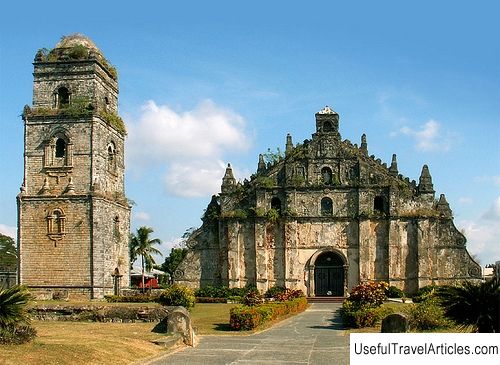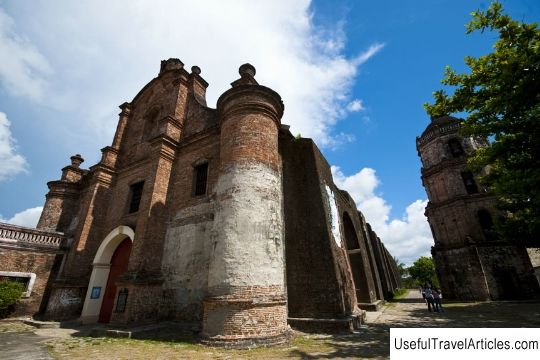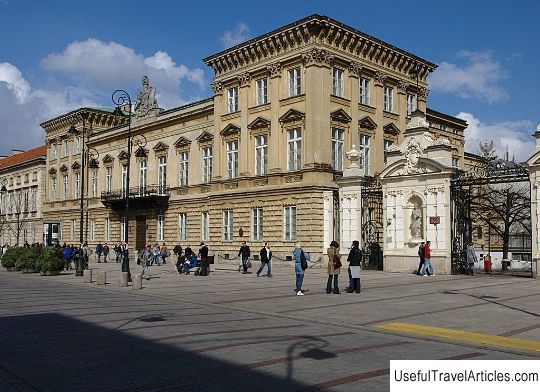Paoay Church description and photos - Philippines: Luzon Island

Paoay Church description and photos - Philippines: Luzon Island. Detailed information about the attraction. Description, photographs and a map showing the nearest significant objects. The title in English is Paoay Church. Photo & DescriptionSt. Augustine's Paoai Church is a Roman Catholic church located in Paoai, Ilocos North province, Luzon Island. The construction of the church, which began in 1694, was completed in 1710, and since then it has invariably attracted attention with its original architecture - 24 huge pillars on the sides and back of the building. And on the facade of the church, you can see clear references to Javanese architecture, primarily to the Borobudur temple on the island of Java. In 1993, the church was listed as a World Cultural Heritage by UNESCO as one of the finest examples of baroque architecture in the Philippines, adapted to the country's difficult seismic conditions. A few meters from the main building of the church there is a three-story bell tower built of coral. Moreover, it stands at such a distance that, in the event of a collapse, it does not damage the church itself. During the Philippine Revolution of 1898 and during the Second World War, the bell tower was used by local partisans as an observation post. In addition, it is also a kind of status symbol for local residents: during the wedding of the wealthy inhabitants of Paoaya, the bell rings louder and longer than during the wedding of the poor. Part of the church was destroyed during the earthquakes of 1865 and 1885. And when archaeological excavations were carried out here in the early 2000s, a prehistoric human skeleton and fragments of pottery were discovered inside the church. Today, these artifacts can be seen at the National Museum of the Philippines in Manila. The church itself combines the features of the Gothic, Baroque and Oriental styles. The facade has clear Gothic elements, the pediment is in traditional Chinese style, and the naves, as mentioned above, are influenced by Javanese architecture. The walls of the church are 1.6 meters thick and are capable of withstanding powerful tremors, not to mention the constant typhoons in these places.       We also recommend reading Chitralada Palace description and photos - Thailand: Bangkok Topic: Paoay Church description and photos - Philippines: Luzon Island. |




